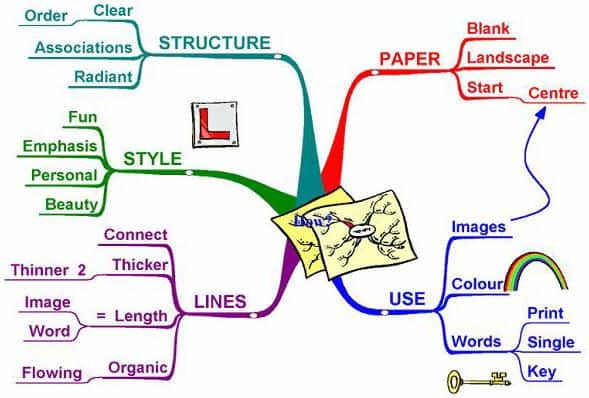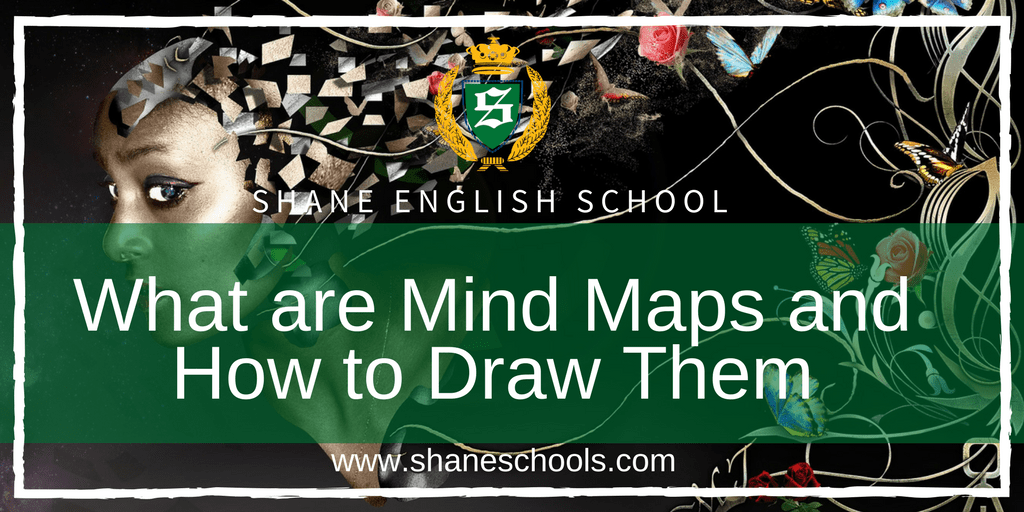Drawing mind maps is a powerful graphic technique that increases the potential of our mind. Drawing these maps can be applied in every aspect of our lives to improve learning or clearly define the goals that are ahead of us.
With advances in science and medicine, we have come to the realization that everything is subject to change and nothing is absolute. The knowledge we possess is increasing, and it helps us be better and better every day. Learning is imperative in every segment of our activities, a process that allows us to move in an upward trajectory and advance further.
This need was recognized by psychologist Tony Buzan, who has since been involved in the development of intellectual and creative abilities and turned it into a conceptual project that resulted in the idea of mapping the mind. Although, it is assumed that Leonardo Da Vinci also used this way of learning and recording ideas.
What are Mind Maps
This way of learning allows us to use and remember extensive material, remembering only the essence, without much attention to detail. Mind maps are a graphic representation of clear and creative.
This visual representation moves from the center outwards in an increasing number of branches. It starts from a primary term or theme, it gets more and more specific to describe that central idea until until the map reveals a set of keywords related to the topic. Keywords have a role in creating an association to a particular content and excluding irrelevant details.
Why are Mind Maps Useful
First of all, they contain elements interesting to both the left and right hemisphere of the brain. The left hemisphere, or logical hemisphere, deals with analysis, numbers, linearity, words, logic, and lists. The right, or creative hemisphere, is in charge of synthesis, spatial understanding, colour, rhythm, imagination and day dreaming.
When the work of the left and right hemispheres of the brain connects, our brain can work so much better! Mind maps include elements that hold the attention of both left and right hemisphere of the brain, and with the help of bright colours, images, associations, we quickly remember the information.
Also, the mind maps clearly define the key concepts, separating essential from the non-essential, allowing us not to wander and not waste time on irrelevant details.
How to Draw a Mind Map
First, the center of the mind map is drawn, which should be a key concept, a key idea, or even better, a drawing of the main concept. It is important to say that one image is worth a thousand words and that our brain will forget words but remember some pictures or drawings. If the central drawing is specific, funny, or contains an association to a key term, our brain will adopt the image in a fraction of a second.
The mind map, in essence, contains associations of thoughts that originate or have a connection to the central point. From the central image, other topics are branched, which can be further divided into less relevant terms.
Mind maps are usually drawn with markers, although you could use crayons. It is important that the central drawing contains a minimum of three colours, in order to create the illusion of three dimensionality that seems convincing to our minds. The more colours, the better.
The same goes for drawings. Our brain likes pictures, and everything is much more enjoyable, simpler and easier to remember if it creates a picturesque association to a given term. So, the more drawings, the better. Only positive associations are recommended.
After all, we can look at and analyze the following map, created by Buzan himself, about the laws of drawing mind maps. This map does not specifically contain drawings other than central but is useful until we learn how to draw branches.

After finishing the central drawing (in this case, the mind maps), the first branch is drawn, and here it is red. Generally, it does not matter on which side you begin, but it is always easier if we develop a routine. Namely, it is recommended to draw branches in a clockwise direction.
One of the branches, in this case red, above which we write what it contains (here it is paper) is a little thicker than its branches, which are always thinner towards the top but thicker towards the knot. It is explained what kind of paper we need to draw the mind maps: white with no writing on it and set horizontally. The third red structure has an even smaller branch that suggests that you should start mapping by drawing the central image.
At the thickest part of the blue branch, which indicates a new topic, it says ‘Use.’ The author suggests that we use images, colours, and words when drawing maps. As far as words are concerned, the letters should be bold, and you shouldn’t write sentences but keywords.
Our brain will deal with the improvisation of details. After all, try it. Summarize some text or book in this way, and put only the keywords on the map. You will understand that you will be able to tell the whole story based on these words.
The third, purple branch explains how to draw the branches. They go from thicker to thinner, they are connected and contain words and drawings or images above them. Letters should be written horizontally.
As for the style, explained in the green branch, the author says it should be fun, beautiful and interesting. It would be ideal if we developed our own distinctive style. And this is achieved by constant exercise.
By developing personal symbols, we can quickly present an idea in a couple of ways. But that requires skill. It is superfluous to say that mind maps can only be used by those who are persistent, who will by continuously exercising succeed in summarizing hard material through a couple of main branches with key words and images. Or draw up a work plan for the next week, month, or year.
It’s Efficient and Multi-purpose
See how long it took to write a description of that mind map? Mind maps represent a way to put a lot of information on a single sheet of paper and it a good way to organize notes. It is even possible to summarize an entire book in such a way, making it easier for yourself to later recall all the major things without great reference to details. That’s the point. Our brain likes to remember only the key ideas and key words. Mind maps have enabled millions of people around the world to use their minds more effectively.
We become what we think. If in our head we have a clear picture of what we want, we can place it on paper, then place that paper in a visible place. Clear goals are crystallized and remind us of what we have achieved and what not. They remind us to concentrate on priorities.
Another small, last look at the map. The last, dark green branch describes the structure of the mind maps. It recommends order, clarity and, once again: ASSOCIATIONS! Try it yourself!
About the Author
Milica Madić, freelance blog/article writer from Serbia, with experience in teaching and working with young learners.

We're hiring!
With schools around the world, Shane English School always has exciting new opportunities to offer.


